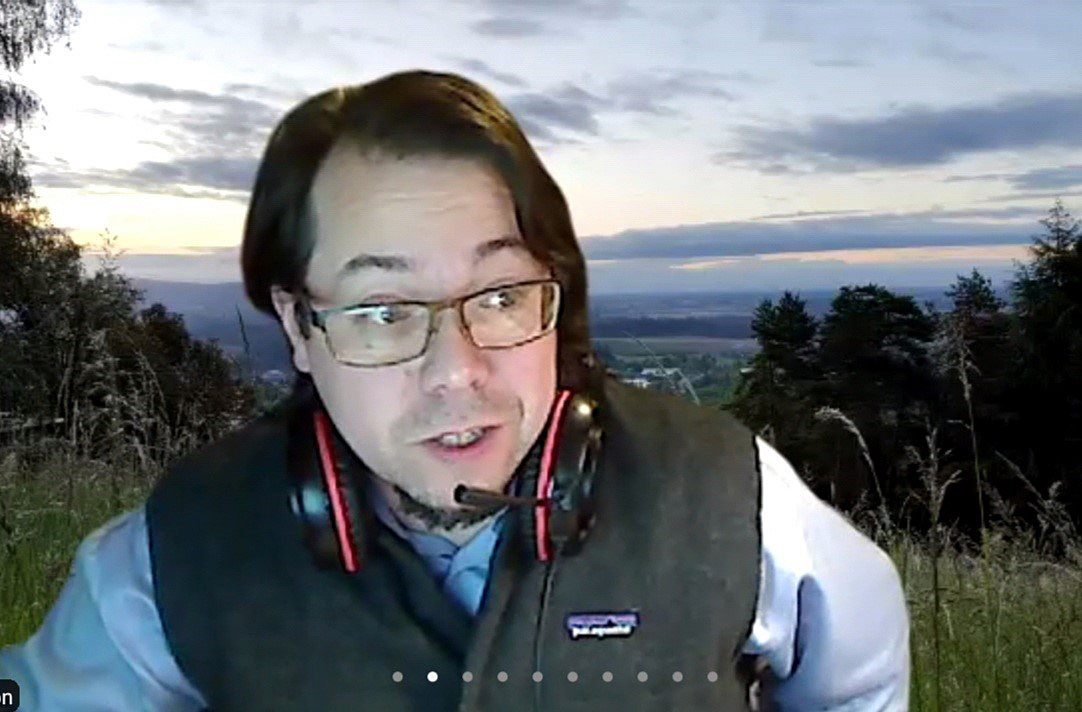Culture
History and Culture Summit wraps up virtual events with Marys Peak presentation

By Danielle Harrison
Smoke Signals staff writer
The Tribe finished its annual History and Culture Summit with a virtual presentation by two Tribal members on Wednesday, Nov. 18.
Like every other large indoor event in Oregon, it was presented in Zoom this year due to the COVID-19 pandemic.
The fourth event, “StoryMap: Indigenous Naming of Creeks on Marys Peak,” was presented by Grand Ronde Cultural Policy Analyst and Tribal Elder Greg Archuleta, and Tribal member and Portland State University student Jesse Norton. It was followed by a moderated discussion panel led by Tribal Cultural Resources Department Manager David Harrelson. The event proved to be quite popular, with more than 95 people logging in to attend.
In 2018, 10 unnamed creeks on Marys Peak near Corvallis were approved for naming by the U.S. Geological Service, and included words from three different Indigenous languages, which received broad local support and participation. The process was hailed as a success story among naming efforts nationally and served as an example of how Tribes can be engaged and represented.
The project began after Marys Peak Alliance member Dave Eckert contacted the Grand Ronde Tribe’s Cultural Resources Department and asked if the Tribe would be interested in renaming the creeks. The process took approximately two years and involved input from several different groups.
“We had the opportunity this summer to visit all of the creeks, walk through them and see what they were like,” Archuleta said. “Since time immemorial, it has been culturally significant to the Grand Ronde and Siletz peoples. It’s a sacred mountain.”
Archuleta and Norton showed various slides of their hikes to the different creeks and discussed the renaming process, which involved the Grand Ronde and Siletz Tribes, U.S. Forest Service, Bureau of Land Management, city of Corvallis, Starker Forests Inc., Oregon State University, Spring Creek Project and Marys Peak Alliance.
“Naming these creeks makes it easier to conduct search and rescue operations rather than if they remained unnamed, to conduct scientific studies and to honor the original stewards of the land,” Norton said.
Added Harrelson, “Hopefully, this StoryMap can convey the meaning and help with understanding. … Naming also helps with planning efforts. We are really excited about this.”
During a question-and-answer session afterward, the panelists were asked what they enjoyed most about the naming process.
“It was great to connect with the land,” Archuleta said. “I like to visit the area and get a bigger picture of how the old stories connect to the landscape.”
Norton agreed.
“It was very special to explore Marys Peak,” he said. “Within the Grand Ronde Tribe, the Tribes that make up our confederation span such a vast landscape.”
Harrelson said he appreciated the noncontroversial nature of the process.
“With this project, we were naming unnamed creeks, so we didn’t have to convince people to change a name. Also, this was built on relationships. Our homelands are 14 million acres. When it comes to naming things, we can spend the time and effort in many places. But if changing a name will cause harm to our communities, it probably isn’t worth it.”
The first three presentations were held on Oct. 14, 22 and 26. Videos from the Oct. 14, 22 and Nov. 18 events will be available to view for three months at www.grandronde.org/history-and-culture-summit/.
